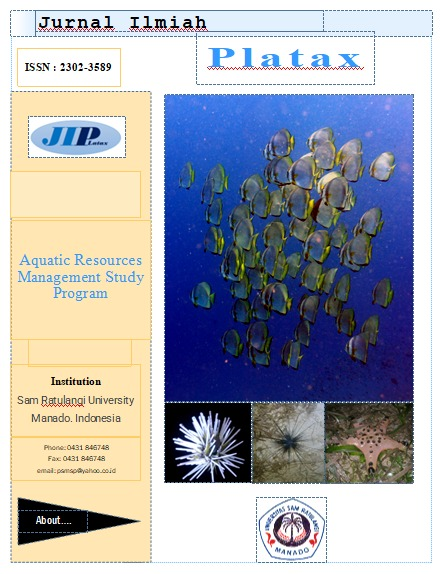Antibacterial Activity of Stylissa carteri Sponge Extract from Manado Bay, North Sulawesi
DOI:
https://doi.org/10.35800/jip.v10i1.36020Abstract
Marine sponges contain secondary metabolites with unique chemical structures and very interesting pharmacological activities, such as antibacterial, anticancer, antiviral and others to be developed as candidate drugs. The presence of bioactive metabolites in sessile nature such as sponges also reflects the ecological adaptation formed during a long evolutionary process as a defense mechanism of this organism with its environment in the form of resistance to predation, competition and infection factors against pathogenic bacteria, so this study aims to examine the antibacterial activity of extracts and fractions of Stylissa carteri sponge fractions as well as testing the Minimum Inhibitory Concentration (MIC) and Minimum Bactericidal Concentration (MBC) values. The method used in testing the antibacterial activity is the agar diffusion method (Disc Diffusion Kirby Bauer Method). The presence of antibacterial activity was indicated by the formation of a clear zone around the paper disc after incubation for 24 hours. The results showed that antibacterial activity of S. carteri sponge extract tested on Bacillus megaterium DSM32T bacteria revealed to be the strongest inhibition zone of 21 mm. Further testing on the extract fraction of S. carteri showed that the semipolar fractions showed strong activity against the B. megaterium while the polar fraction was categorized as moderate action, the non-polar fraction showed no activity against the bacteria. The determination of the MIC and MBC values was obtained at 500 ppm and 1000 ppm respectively.
Downloads
Published
How to Cite
Issue
Section
License
COPYRIGHT
Authors who publish with this journal agree to the following terms:
Authors hold their copyright and grant this journal the privilege of first publication, with the work simultaneously licensed under a Creative Commons Attribution License that permits others to impart the work with an acknowledgment of the work's origin and initial publication by this journal.
Authors can enter into separate or additional contractual arrangements for the non-exclusive distribution of the journal's published version of the work (for example, post it to an institutional repository or publish it in a book), with an acknowledgment of its underlying publication in this journal.
Authors are permitted and encouraged to post their work online (for example, in institutional repositories or on their website) as it can lead to productive exchanges, as well as earlier and greater citation of the published work (See The Effect of Open Access).




















